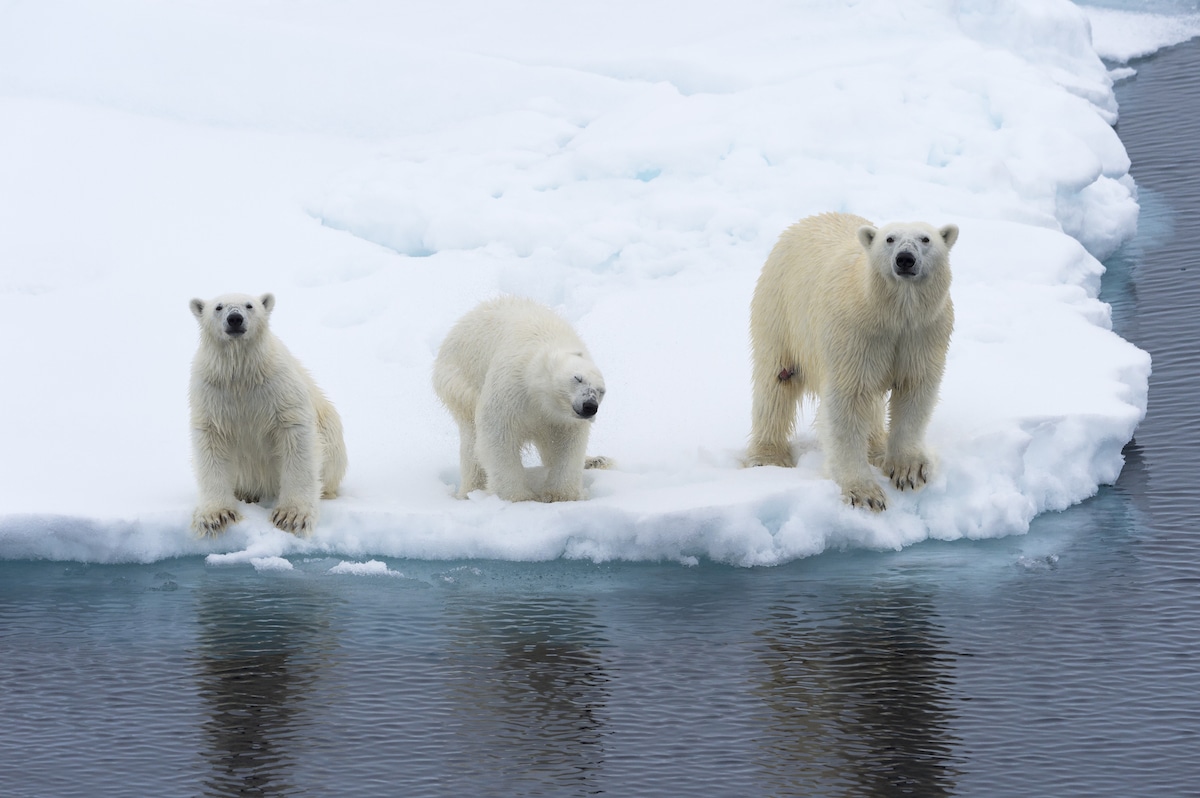Scientists Find Direct Link Between Polar Bear Cub Survival Rates and Human-Caused Carbon Emissions

 Why you can trust us
Why you can trust us
Founded in 2005 as an Ohio-based environmental newspaper, EcoWatch is a digital platform dedicated to publishing quality, science-based content on environmental issues, causes, and solutions.
A new study has found a direct link between human-caused greenhouse gas emissions and the survival of polar bear cubs. The findings could help address a former legal opinion that impacts polar bear protections.
A 2008 legal opinion from the Solicitor of the Department of Interior noted that emissions did not need to be considered when deciding whether projects could move forward or if they would impact the bears. The opinion stated, “It is currently beyond the scope of existing science to identify a specific source of CO2 emissions and designate it as the cause of specific climate impacts at an exact location.”
Polar bears were labeled as threatened under the Endangered Species Act the same year, but the legal opinion created a loophole for projects, including oil and gas development, to move forward without considering greenhouse gas impacts on polar bears.
The new study from scientists at Polar Bears International, the University of Washington and the University of Wyoming directly connects the number of Arctic ice-free days to specific quantities of emissions and determines how these ice-free days can impact polar bear cub survival rates. The information, which was published in the journal Science, helps close the loophole.
“Overcoming the challenge of the Bernhardt Memo is absolutely in the realm of climate research,” Cecilia Bitz, co-author of the study and professor of atmospheric sciences at the University of Washington, said in a statement. “When the memo was written in 2008, we could not say how greenhouse gas emissions equated to a decline in polar bear populations. But within a few years we could directly relate the quantity of emissions to climate warming and later to Arctic sea ice loss as well. Our study shows that not only sea ice, but polar bear survival, can be directly related to greenhouse gas emissions.”
Polar bears are threatened in part by low cub recruitment linked to climate change, meaning that not enough cubs are surviving to adulthood, Polar Bears International explained on its website. Ice-free days make it harder to polar bear mothers to hunt for food, leading to a decline in cub survival.
Steven Amstrup, chief scientist emeritus of Polar Bears International and former member of the United States Geological Survey who helped obtain the Endangered Species Act listing for polar bears, led the study, which allows researchers to calculate the impact of greenhouse gas emissions from specific projects on polar bear cubs.
“We’ve known for decades that continued warming and sea ice loss ultimately can only result in reduced distribution and abundance of polar bears,” Amstrup said. “But until now, we’ve lacked the ability to distinguish impacts of greenhouse gases emitted by particular activities from the impacts of historic cumulative emissions.”
According to Amstrup, the methodology involves regression analysis and could be used not just for polar bears but for other species around the world to help determine impacts that projects may have on the environment.
However, some experts aren’t sure that the new data could shift political opinion.
“I think it takes us a little bit closer to understanding some of those relationships, but… I just don’t know that this paper pushes it over a new threshold,” Andrew Derocher, a polar bear expert and biological sciences professor at the University of Alberta, told The Associated Press. “I just don’t think that this is the smoking gun that is going to change opinion.”
Either way, the research offers more insight into emissions and their connections to polar bear survival at a crucial time. According to the International Union for Conservation of Nature, polar bear populations are expected to decline 30% in the next 35 to 40 years. A study from 2020 warned that polar bears could be extinct by the end of this century if greenhouse gas levels continue rising.
Subscribe to get exclusive updates in our daily newsletter!
By signing up, you agree to the Terms of Use and Privacy Policy & to receive electronic communications from EcoWatch Media Group, which may include marketing promotions, advertisements and sponsored content.

 233k
233k  41k
41k  Subscribe
Subscribe 



